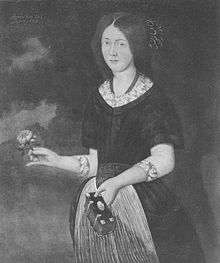Paus family
 | |
| Ethnicity | Norwegian |
|---|---|
| Current region | Norway, Sweden |
| Earlier spellings | Pauss, de Paus |
| Place of origin | Oslo, Norway |
The Paus family (earlier spellings include Pauss and de Paus)[1] (pronounced [pæʉs]) is a Norwegian patrician family that first appeared in Oslo in the 16th century. According to S.H. Finne-Grønn, it is most likely descended in the male line from Hans Olufsson (ca. 1500–1570), a member of the royal clergy in Norway before and after the Reformation, who served as a canon at St Mary's Church and who held personal noble rank by virtue of his high ecclesiastical office.[1][2] He was according to Finne-Grønn most likely the grandfather of the brothers Hans (1587–1648) and Peder Povelsson Paus (1590–1653), who were both born in Oslo and who both became priests, and who have long been known as the family's earliest certain ancestors.
Parish priest in Fredrikstad Hans Povelsson Paus (1587–1648) only had a limited number of patrilineal descendants, whereas parish priest in Kviteseid and provost of Upper Telemark Peder Povelsson Paus (1590–1653) has a large number of descendants until the present day. From the 17th to the 19th century, the family were among the foremost of the regional elite, the "aristocracy of officials" in Upper Telemark,[3] where many family members served as priests, judges and other officials and where several state and church offices in practice were hereditary in the family for extended periods.
Since the 19th century, several family members have been ship-owners, industrialists and estate owners. Members of the family have founded several enterprises in Norway, including the former industrial company Paus & Paus and the iron and steel enterprise Ole Paus. While the family has been mainly Lutheran since the Reformation, some noted family members since the 19th century have been converts to Catholicism. The papal chamberlain, estate owner and Knight of Malta Christopher Tostrup Paus, heir to one of Norway's largest timber companies, was conferred the title of count by Pope Pius XI in 1923. Brita Paus née Collett was noted as a Catholic humanitarian, whereas her husband, the noted surgeon Bernhard Paus, was Grand Master of the Norwegian Order of Freemasons. Since 1914, members of the family have owned several estates in Sweden, of which the estate Herresta is still owned by the family; this family branch is also descended from Leo Tolstoy. A village in India, Pauspur, was named in honour of the theologian Bernhard Pauss.
The family's best known descendant is the playwright Henrik Ibsen, who named or modelled various characters after family members, for example the character Hedvig in The Wild Duck. Some episodes in plays such as The Wild Duck or Peer Gynt were based on Paus family traditions and real events that took place in the Paus household in the early 19th century. Ibsen's relationship with the Paus family, his parents' closest relatives, was complex and both of his parents, who grew up as social siblings, belonged to it in either a biological or social sense. Modern family members include the troubadour Ole Paus and his son, the composer Marcus Paus. Family branches live in Norway, Denmark, Sweden and England.
In the course of its history, family members have used multiple seals and coats of arms, including a crane in its vigilance in the seal of Povel Paus on the 1661 Sovereignty Act and a bull's head with golden star used in the modern era. The etymology of the name is uncertain.
Early history
.jpg)
According to the preeminent Norwegian genealogist S.H. Finne-Grønn, the family is most likely descended from Hans Olufsson (born ca. 1495–1500), a canon at St Mary's Church, the royal chapel in Oslo.[1][2] As indicated by his patronymic, Hans Olufsson's father was named Oluf. Due to his career as a member of the royal clergy, Hans Olufsson almost certainly had a privileged family background. Most canons in Norway at the time were recruited from the lower nobility, and normally studied at universities abroad, which was normally only possible with an affluent background. Hans Olufsson served as a canon at St Mary's Church and a member of its cathedral chapter until it was merged with that of Oslo Cathedral in 1545, following the Reformation. St Mary's Church was a powerful political institution as the seat of government of Norway at the time, as its provost was also the Chancellor of Norway with one of the canons serving as Vice-Chancellor. Its clergy held high aristocratic rank ex officio, as decreed by Haakon V of Norway in a 1300 royal proclamation, with canons holding the rank of Knight[4] (the highest rank of nobility in Norway since 1308), and were granted significant privileges. Hans Olufsson held a prebend (estate held for his lifetime), the prebend of Saint Mary's altar sub lectorio, also known as the prebend of Dillevik,[5] that included the income of 43 church properties (36 huder, hides) in Eastern Norway. After 1545, Hans Olufsson served as a priest at Oslo Cathedral, but retained his prebend affiliated with the estate of St Mary's Church. He died on the night between 17 and 18 September 1570 and was buried in Oslo Cathedral on 19 September. Following his death, his prebend passed to Jens Nilssøn, the noted Oslo humanist and later Bishop of Oslo.[2]
Hans Olufsson's son, as documented by court proceedings from 1602, was Povel Hansson (born ca. 1545–50), who was a wealthy merchant in Oslo. According to one theory, the family name is a patronymic based on his name. He was according to Finne-Grønn[2] most likely the father of the two clergymen who became the ancestors of two lineages of the family, and who have long been known as the family's earliest certain ancestors: Hans Povelsson Paus (1587–1648) and Peder Povelsson Paus (1590–1653). Povel probably died in the years immediately following 1602. According to Finne-Grønn, his wife was probably named Inger, and she probably remarried to Anders Augustinusen, the parish priest in Fredrikstad and a member of the influential Floor family, who as chairman of the parish selected his presumed stepson as his successor as parish priest in Fredrikstad.
Hans and Peder Povelsson Paus and their descendants
Hans Povelsson Paus (1587–1648) was born in Oslo and entered the University of Copenhagen as a student under the name Johannes Paulli Asloensis (Asloensis meaning Oslo) around 1607–08. He earned the bachelor's degree in 1616, and shortly after became a chaplain at Oslo Cathedral. In 1622, he succeeded his presumed stepfather Anders Augustinusen as parish priest in Fredrikstad. He had a limited number of descendants, including his sons, Magister Povel Hansson Paus (1620–1658), parish priest in Lier, Bragernes and Strømsø, and Anders Hansson Paus (1622–1689), parish priest in Jevnaker.[2]
.jpg)
Hans' younger brother Peder Povelsson Paus (1590–1653) was born in Oslo and entered the University of Copenhagen as a student under the name Petrus Paulli Asloensis. Following his studies, he served as headmaster of Skien Latin School around 1617, as parish priest in Vinje and as parish priest in Kviteseid and provost of Upper Telemark from 1633. He was married to Johanne Madsdatter. The tradition of Peder's great physical powers have been handed down in Kviteseid until the modern age. Peder was buried under the choir floor in Kviteseid Old Church, where his son Povel placed a beautiful poem in Latin in memory of his father.[2]

Peder's son Povel Pedersson Paus (1625–1682) was parish priest in Hjartdal and married to Ingrid Corneliusdatter Trinepol (1632–1694), a daughter of timber merchant Cornelius Jansen Trinepol (1611–1678) and a member of the wealthy patriciate of Skien who was notably descended from Jørgen von Ansbach. Povel Pedersson Paus was among the 87 representatives of the Norwegian clerical estate who signed the 1661 Sovereignty Act, Denmark-Norway's new constitution which introduced absolute and hereditary monarchy.[6] Magnus Brostrup Landstad describes Povel Pedersson Paus as a learned and pious priest who held on to Catholic customs in post-Reformation Norway.[7] Well versed in Latin, he wrote a Latin poem about his father and personally educated his children. Among his ten children were parish priest in Kviteseid Hans Paus (1656–1715) and district judge in Upper Telemark Cornelius Paus (1662–1723), from which two living main lines of the family are descended.[8] During the 17th and 18th centuries, the office of district judge of Upper Telemark was effectively hereditary in the family for 106 consecutive years and four generations.[9]
Skien branch

The Skien branch of the family is descended from district judge of Upper Telemark Cornelius Paus (1662–1723). He married Valborg Ravn (1673–1726), the daughter of his predecessor as district judge Jørgen Hansen Ravn and Margrethe Fredriksdatter Blom (born 1650). His father-in-law was appointed district judge in 1668 and stepped down in favour of his son-in-law in 1696.[9]
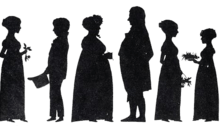
Their son, the procurator (i.e. advocate) Paul Paus (1697–1768) served as his father's deputy judge and as acting district judge for some time, and married Martha Blom (1699–1755), a daughter of forest owner Christopher Blom (1651–1735) and Johanne Margrethe Ørn (1671–1745).[10]
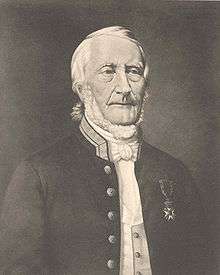
They were the parents of Johanne Paus (1723–1807), married to provost of Raabyggelaget Johan Christopher von Koss (1725–1778), forest inspector of Upper Telemark Cornelius Paus (1726–1799), and Cathrine (Medea Maj) Paus (1741–1776), married to Counselor of Justice Anthon Jacob de Coucheron (1732–1802).
Cornelius Paus sold the former district judge's farm Haatvet in Lårdal in 1788 and moved to Skien, where he died in the home of his son-in-law Johan Andreas Altenburg in 1799. He was married to Christine Falck and was the father of Ole, Martha and Hedevig Paus, who all settled in Skien.
Martha Paus (1761–1786) married ship-owner and timber merchant Hans Jensen Blom (1757–1808), and her descendants include supreme court justice Knut Blom.
Hedevig Christine Paus (1763–1848) married ship-owner and merchant Johan Andreas Altenburg, and they were the maternal grandparents of playwright Henrik Ibsen. Among their descendants are also Prime Minister Sigurd Ibsen, film director Tancred Ibsen and the actress Beate Bille.
Ole Paus (1776–1855) became a burgher of Skien in 1798, and has numerous descendants. He married Johanne Plesner, daughter of the wealthy merchant Knud Plesner and Maria Kall, and who had formerly been married to ship's captain Henrich Ibsen (Henrik Ibsen's grandfather). Ole Paus and Johanne Plesner were the parents of the lawyer Henrik Johan Paus (1799–1893), of the judge, magistrate, Member of Parliament and Governor of Bratsberg Christian Cornelius Paus (1800–1879), and of the merchant and ship-owner Christopher Blom Paus (1810–1898). Ole Paus also became the stepfather of Knud Ibsen. As Henrik Ibsen pointed out in an 1882 letter to Georg Brandes, the Paus family was one of the patrician families dominating the port town of Skien, where he grew up.[11][12]
Henrik Johan Paus, a lawyer who owned the estate Østerhaug in Elverum for some years, married Sophie Lintrup, a daughter of county chief physician (amtsfysikus) Christian Lintrup. They were the parents of Major and War Commissioner Johan Altenborg Paus (1833–1894), who married his second cousin Agnes Tostrup, a daughter of timber merchant Christopher Tostrup. They were the parents of land owner, art collector, philanthropist, papal chamberlain and Knight of Malta Christopher Tostrup Paus (1862–1943), who inherited much of his family's shares of the Tostrup & Mathiesen company and who owned the Trystorp and Herresta estates in Sweden. A convert to Catholicism, Christopher Tostrup Paus was conferred the hereditary title of count by Pope Pius XI on 25 May 1923, and joined the Ointroducerad Adels Förening in 1924, thus becoming part of Sweden's unintroduced nobility.[13] He died in 1943 without issue. Among Henrik Johan Paus' descendants are also the British diplomat Christopher Lintrup Paus (b. 1881), the Director at the Directorate of Public Roads Hans Wangensten Paus (b. 1891) and Ambassador in Iran, Brazil and Mexico Thorleif Lintrup Paus (b. 1912).
Christopher Blom Paus was the father of iron and steel wholesaler, factory-owner and banker Ole Paus (1846–1931) and engineer Carl Ludvig Paus (1856–1953).
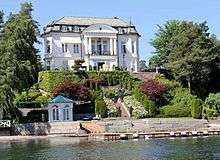
Ole Paus was married to Birgitte Halvordine Schou (a cousin of Halvor Schou), and their children were Martha Marie Paus (b. 1876), married to historian Otto von Munthe af Morgenstierne, businessman Christopher Blom Paus (1878–1959), Consul-General, businessman and estate owner Thorleif Paus (1881–1976), Else Margrethe Paus (b. 1885), married to businessman Nicolay Nissen Paus (her distant relative), and Fanny Paus (1888–1971), married to businessman Trygve Andvord (1888–1958).
Christopher Blom Paus (b. 1878) was the father of businessman Per Christian Cornelius Paus, married to his distant cousin Hedevig, Countess of Wedel-Jarlsberg, who owned the Esviken manor, and Else Birgitte Paus, married to Danish lawyer and papal chamberlain Gunnar Garth-Grüner (1903–93). Per and Hedevig were the parents of Cornelia Paus, businessman Peder Nicolas Paus and businessman Christopher Paus, married to Cecilie Wilhelmsen, whose family owns the Wilh. Wilhelmsen shipping company. Their daughter is designer Pontine Paus.

Thorleif Paus served as Norwegian consul-general in Vienna, owned two factories and became owner of Kvesarum Castle in Sweden. He was married to Ella Stein and secondly to Countess Ella Moltke née Glückstadt. He was the father of Major-General Ole Otto Paus, the grandfather of troubadour Ole Paus and the great-grandfather of composer Marcus Paus. Else and Nicolay Nissen Paus were the parents of Lucie Paus, married to land-owner Axel Løvenskiold, and Fanny Paus, married to Ambassador Henrik Andreas Broch.
Herresta branch
Carl Ludvig Paus (b. 1856) was the father of land-owner Herman Christopher Paus (1897–1983), who bought Herresta, one of the largest estates of Södermanland County in Sweden, from his relative, Count Christopher Tostrup Paus, in 1938. He was married to Countess Tatyana Tolstoy, a granddaughter of Leo Tolstoy. Their descendants own several estates in Sweden and form the Herresta branch of the family. Today, Herresta is managed by their grandson Fredric Christopherson Paus.
Christopher Tostrup Paus owned many family portraits dating back to the 17th century, which were found at Herresta and some of which are still found there. They included a silhouette of members of the Altenburg and Paus families from shortly after the Napoleonic Wars, including Marichen Altenburg—the only existing portrait of any of Henrik Ibsen's parents.
Drammen branch
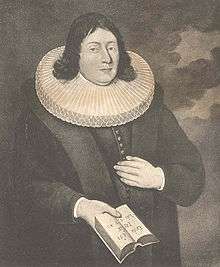
The Drammen branch is descended from Hans Paus (b. 1656). He was married to Susanne Morland (1670–1747), who was the daughter of provost of Upper Telemark Amund Morland (1624–1700) and the granddaughter of land-owners Christen Andersen and Anne Gundersdatter, who owned Borgestad Manor. Hans Paus wrote the poem Stolt Anne about his wife's first cousin Anne Clausdatter, which is noted for being the first written in dialect in Norway. Their son Peder Paus (1691–1759) succeeded his uncle Cornelius as district judge of Upper Telemark in 1723, and was in turn succeeded by his son, Hans Paus (1720–1774) in 1751. Peder Paus was married in his first marriage to Danish-born Cathrine Medea May Hermansdatter Arentsen (died 1736), daughter of the parish priest in Ølsted northwest of Copenhagen Herman Arentsen and granddaughter of Arent Berntsen and Søren Nielsen May.[15] In his second marriage, he married his cousin Hedvig Coldevin Corneliusdatter Paus. Hans Paus, a son of the first marriage, was married to Danish-born Andrea Jaspara Nissen (1725–1772), daughter of Captain Nicolai von Nissen and Christence Groll and a member of a prominent and partially ennobled Danish family of land-owners who were descended from most of the Danish Uradel including Banner-Høeg, Kaas, Grubbe, Ulfstand, Bille, Reventlow, Juel, Lykke, Gyldenstierne, Rosenkrantz, Walkendorff, Ulfeldt, Rantzau and Brahe. Numerous of their descendants were named for the Nissen family until this day.
Hans' and Andrea's grandson was shipmaster in Drammen Isach Nicolai Nissen Pauss (1780–1849), the father of ship-owner and shipmaster Nicolai Nissen Pauss (1811–1877) and Gustava Hanna Andrea Pauss (born 1815), married to ship-owner Hartvig Eckersberg (born 1813). Nicolai Nissen Pauss was married to Caroline Louise Salvesen, a granddaughter of wealthy ship-owner and timber merchant Jacob Fegth (1761–1834), who contributed to the establishment of the University of Oslo. Their children were ship-owner Ismar Mathias Pauss (1835–1907), Nicoline Louise Pauss, married to ship-owner Peter Hannibal Høeg, and cand.theol. Bernhard Cathrinus Pauss (1839–1907), who became the owner of Nissen's Girls' School, a private girls' school in Oslo which served the city's higher bourgeoisie. He also established the first tertiary education for women in Norway, a women's teacher's college. The village of Pauspur in India was named in his honour. Two of Ismar Mathias Pauss' sons founded the Paus & Paus industrial company, which existed 1906–2001. Another son, Olav Eduard Pauss, was a ship-owner and consul-general in Sydney.
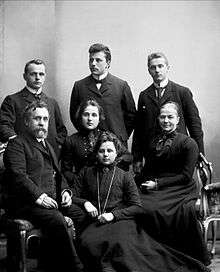
Bernhard Cathrinus Pauss was married to Anna Henriette Wegner (1841–1918), a daughter of industrialist and land-owner Benjamin Wegner of Frogner Manor and Henriette Seyler, whose Hanseatic family owned Berenberg Bank. Henriette Seyler was mostly descended from Hamburg Hanseatic families such as Berenberg/Gossler and Amsinck and families of the Basel patriciate such as Merian, Burckhardt and Faesch, and more distantly from the Welser banking family. Bernhard and Henriette were the parents of surgeon and President of the Norwegian Red Cross Nikolai Nissen Paus (1877–1956), engineer and CEO of Akershus Energi Augustin Thoresen Paus (1881–1945), and lawyer and Director at the Norwegian Employers' Confederation George Wegner Paus (1882–1923).
Nikolai Nissen Paus was the father of surgeon and Grand Master of the Norwegian Order of Freemasons Bernhard Paus (1910–1999), who was married to humanitarian Brita Collett (1917–1998), daughter of land-owner Axel Collett. Their children included Secretary of State Lucie Paus Falck, former CEO of NCC in Norway Nikolai Paus and surgeon Albert Collett Paus.
Seals and coats of arms
Parish priest in Hjartdal Povel Pedersson Paus (1625–1682), who signed the 1661 Sovereignty Act—the new Constitution of Denmark-Norway—as one of the 87 representatives of the clerical estate, used a seal with a reversed crane in its vigilance. His name is written in Latin as Paulus Petri Windius, i.e. with his patronymic and place of birth, Vinje.[6] He used the same seal on the 1664–1666 census.[16] Pliny the Elder wrote down the ancient legend that cranes would appoint one of their number to stand guard while they slept. The sentry would hold a stone in its claw, so that if it fell asleep it would drop the stone and wake the other cranes.
Hans Krag includes two coats of arms used by family members in the first volume of Norsk heraldisk mønstring with arms of Norwegian higher officials from Frederick IV's reign: Povel Paus' son, district judge of Upper Telemark Cornelius Paus (1662–1723) used a coat of arms featuring a wild man, and Cornelius' nephew and successor as district judge, Peder Paus (1691–1759), used a coat of arms featuring a dove with olive branch standing on a serpent.[17]
The modern coat of arms was adopted in the late 19th century, as an interpretation of an ambiguous seal from the 14th century used by the lawspeaker of Oslo, Nikolas (or Niculos in some sources) Sigurdsson Paus, at the time believed (but never verified) to be related to the same family, and was later given its current design by Hallvard Trætteberg, Norway's preeminent heraldic artist in the 20th century. It is blazoned in Trætteberg's book Norske By- og Adelsvåben as "in red, silver bull's head with neck, at the top dexter [six-pointed] golden star."[18] This coat of arms is also used in the comital letters patent of Christopher Paus.[13]
In his book Heraldisk nøkkel, Herman Leopoldus Løvenskiold mentions four arms associated with the name Paus, including the two arms mentioned in Krag's book, the arms with a bull's head and star, and an arms with six roundels (3.3) under a fess.[19]
 Povel Paus (1625–1682) used a reversed crane in its vigilance in his seal. His seal as used on the 1664–1666 census. The same seal was used on the 1661 Sovereignty Act.
Povel Paus (1625–1682) used a reversed crane in its vigilance in his seal. His seal as used on the 1664–1666 census. The same seal was used on the 1661 Sovereignty Act. Stylized modern drawing of Povel Paus' seal.
Stylized modern drawing of Povel Paus' seal. Coat of arms as used by district judge of Upper Telemark Cornelius Paus (1662–1723), drawn by Hans Krag
Coat of arms as used by district judge of Upper Telemark Cornelius Paus (1662–1723), drawn by Hans Krag Coat of arms as used by district judge of Upper Telemark Peder Paus (1691–1759), drawn by Hans Krag
Coat of arms as used by district judge of Upper Telemark Peder Paus (1691–1759), drawn by Hans Krag Coat of arms as used by count Christopher Paus, drawn in the older style.
Coat of arms as used by count Christopher Paus, drawn in the older style..svg.png) Arms with comital heraldic crown as used by Christopher Paus, e.g. in the painting seen above, drawn in the modern style.
Arms with comital heraldic crown as used by Christopher Paus, e.g. in the painting seen above, drawn in the modern style. Coat of arms of Bernhard Paus as Grand Master of the Norwegian Order of Freemasons. The same arms were used by his father Nikolai Nissen Paus, who held the third highest position in the order.
Coat of arms of Bernhard Paus as Grand Master of the Norwegian Order of Freemasons. The same arms were used by his father Nikolai Nissen Paus, who held the third highest position in the order.
Name

The Paus name is first documented in 1644, when it was used in an oration in Greek, printed by Ulrich Balck at the University of Franeker, where Anders Hansson Paus (b. 1622) thanked his father Johannes Paulinus Pausius (i.e. Hans Povelsson Paus b. 1587) and four other benefactors (Chancellor Jens Bjelke, Bjelke's son-in-law Sten Willumsen Rosenvinge, Daniel Bildt and Bishop of Oslo Oluf Boesen) who paid for his education. A copy is held by The Royal Library, Denmark.[2] Until the 17th century, Norwegian families rarely used family names—as Scandinavians traditionally only used patronymics—and this custom was only gradually adopted by a small number of families prior to around 1900. It is uncertain when the name was actually first adopted, and the etymology of the name is also uncertain. The name has an "exotic" form for a Norwegian name according to Halvdan Koht, who suggested it could nevertheless be of Norwegian origin and a patronymic based on the first name Paul.[20] In that case it would necessarily refer to Povel Hansson (born ca. 1545–50) or (less likely) an earlier person. The genealogist S. H. Finne-Grønn has suggested that the name originated in a (possibly related) family in the 14th century, possibly under influence from German in late mediæval Norway.[2] The researcher Ivar Utne has suggested that the name is cognate with the word pave, the Norwegian word for pope (Latin for "father", also "paus" in Dutch means pope), being used as a nickname.[21]
Several other spellings of the name have been used, including Pauss in the 19th and early 20th century. Several family members have used the spelling de Paus abroad in the late 19th and early 20th century. For example the spelling was used outside Norway by papal chamberlain Christopher Tostrup Paus and is used e.g. in the Acta Apostolicae Sedis, the Annuario Pontificio[22] and the Adelskalender of Ointroducerad Adels Förening.[13] Norwegian consul-general in Vienna Thorleif Paus used the spellings de Paus and von Paus interchangeably when living in Austria-Hungary.[23]
Several individuals in Oslo in the 14th century and around 1400 also had the name or nickname "Paus." Their possible relation, or a relation to the family that appeared in the 16th century, remains unknown. There was also a farm in Oslo called "Pausen" in the 14th century.[2]
In fiction
Henrik Ibsen modelled and named many literary characters for his relatives. In a letter to Georg Brandes, Ibsen noted that he had used his family and childhood memories "as a kind of model" for the Gynt family and milieu in the play Peer Gynt. In another letter, he confirmed that the character of "Åse" in Peer Gynt was based on his mother. The character of "Hedvig" in The Wild Duck is named for Ibsen's grandmother Hedvig Paus. Episodes in plays such as The Wild Duck and Peer Gynt were also based on events that took place in the Altenburg/Paus household and the Paus household at Rising near Skien in the early 19th century.[24] In an earlier draft of Hedda Gabler, Ibsen used the name "Mariane Rising," obviously named for his aunt Mariane Paus from the Rising estate, but later renamed the character "Juliane Tesman," and the warm portrayal of her in the final edition is also based on his aunt.[25] His uncle Christian Cornelius Paus, who was both the magistrate, chief of police and district judge in Skien, is a possible inspiration for the character of Peter Stockmann, the magistrate, chief of police etc. in An Enemy of the People; they were also both descended from the real Stockmann family of Telemark.[26]
In Norway, the fictional character "Jennings" was named "Stompa", an acronym of "Stein Oskar Magell Paus Andersen."
Quote
- "When the Pauses are dead, they are dead, but my name will live on." (Knud Ibsen, father of Henrik Ibsen, referring to his and his wife's relatives following his own bankruptcy)[27]
References
- 1 2 3 Petter Henriksen, ed. (2005–2007). "Paus". Store norske leksikon (in Norwegian) (4 ed.). Oslo: Kunnskapsforlaget. ISBN 82-573-1535-4.
- 1 2 3 4 5 6 7 8 9 Finne-Grønn, S.H. (1943). Slekten Paus : dens oprindelse og 4 første generasjoner. Oslo: Cammermeyer.
- ↑ Jon Nygaard (2013). "...af stort est du kommen." Henrik Ibsen og Skien (p. 68 and p. 74). Senter for Ibsen-studier. ISBN 9788291540122
- ↑ Gave- og stadfestingsbrev fra kong Håkon Magnusson til Mariakirken i Oslo
- ↑ Anton Christian Bang, Oslo domkapitels altre og præbender efter reformationen, Jacob Dybwad, 1893
- 1 2 Allan Tønnesen (ed.), Magtens besegling, Enevoldsarveregeringsakterne af 1661 og 1662 underskrevet og beseglet af stænderne i Danmark, Norge, Island og Færøerne, University Press of Southern Denmark, 2013, p. 372, ISBN 9788776746612
- ↑ Magnus Brostrup Landstad, Gamle Sagn om Hjartdølerne, 1880, pp. 37–54
- ↑ Finne-Grønn, S. H. "Ætten Paus' stamfædre ved aar 1600". Norsk tidsskrift for genealogi, personalhistorie, biografi og literærhistorie. 1: 68–80.
- 1 2 Hans Eyvind Næss, "Fra tingskriver til dommer," in Hans Eyvind Næss (ed.), For rett og rettferdighet i 400 år. Sorenskriverne i Norge 1591–1991, p. 40
- ↑ Andreas Blom og Jon Lauritz Qvisling. «Familien Paus i Telemarken». I Efterladte historiske optegnelser : særlig vedkommende Skien, Laardal og Kviteseid, 1904, pp. 31–64
- ↑ Ibsen, Henrik (21 September 1882), "Letter to Georg Brandes", Henrik Ibsens skrifter, University of Oslo
- ↑ Oskar Mosfjeld, Henrik Ibsen og Skien: En biografisk og litteratur-psykologisk studie, Oslo, Gyldendal Norsk Forlag, 1949, p. 16
- 1 2 3 Gerber, Tage von (1924). "de Paus". Sveriges ointroducerade adels kalender 1925 (in Swedish). Malmö: Sveriges Ointroducerade Adels Förening. p. 94.
- 1 2 Henrik Gravenor (1928). Norsk malerkunst: under renessanse og barokk 1550-1700. Oslo: Steen. pp. 206–207.
- ↑ Cf. Personalhistorisk Tidsskrift vol. 8 (1887) p. 278
- ↑ Sogneprestenes manntall (1664–1666), Vol. 12, p. 57
- ↑ Krag, Hans (1955). Norsk heraldisk mønstring: fra Fredrik IV's regjeringstid 1699–1730 (in Norwegian). 1. Kristiansand.
- ↑ Trætteberg, Hallvard (1933). "Paus". Norske By- og Adelsvåben (in Norwegian).
- ↑ Herman L. Løvenskiold, Heraldisk nøkkel, Universitetsforlaget, 1978, ISBN 82-00-01697-8
- ↑ Halvdan Koht (1964). Nye innhogg og utsyn (p. 72). Oslo: Aschehoug
- ↑ Utne, Ivar (2005). "Etymology of certain names". University of Bergen. Archived from the original on 14 September 2007. Retrieved 23 March 2013.
- ↑ E.g. Annuario Pontificio, p. 859, 1928
- ↑ E.g. Verordnungsblatt des K. K. Justizministeriums, vol. 24, 1908, p. 8 and p. 12, and vol. 33, 1917 p. 46 and 47, K. K. Hof- und Staatsdruckerei; High-Life-Almanach: Adressbuch der Gesellschaft Wiens und der österreichischen Kronländer, vol. 9 p. 253, 1913; Mitteilungen der Kaiserlich-Königlichen Geographischen Gesellschaft, vol. 52 p. 615, 1909, and vol. 59, 1916, p. 310
- ↑ See e.g. Mosfjeld 1949, passim
- ↑ Mosfjeld 1949 p. 236
- ↑ Mosfjeld p. 277
- ↑ Schneider, J. A. (1924). "Henrik Ibsens slegt". Fra det gamle Skien (in Norwegian). 3. Skien: Erik St. Nilssens Forlag. Archived from the original on 2011-06-22. Retrieved 2011-06-22.
Naar Paus'ene er daue, saa er de daue, men mit navn vil leve, det

